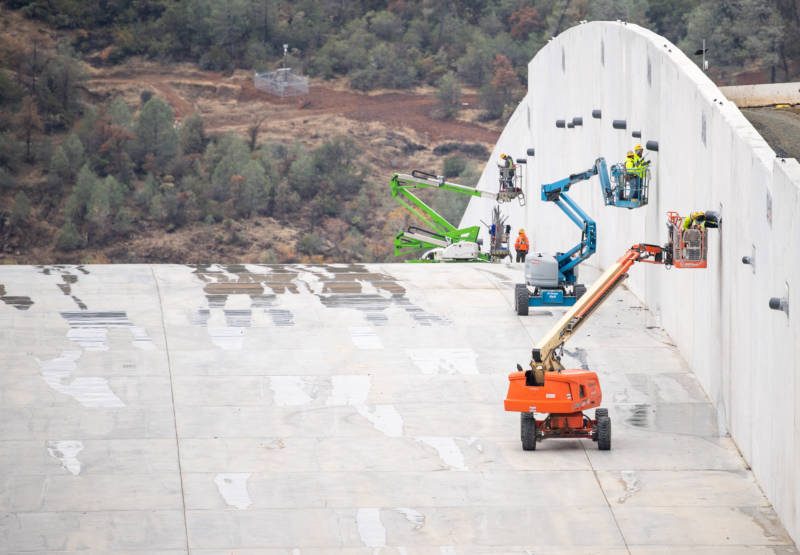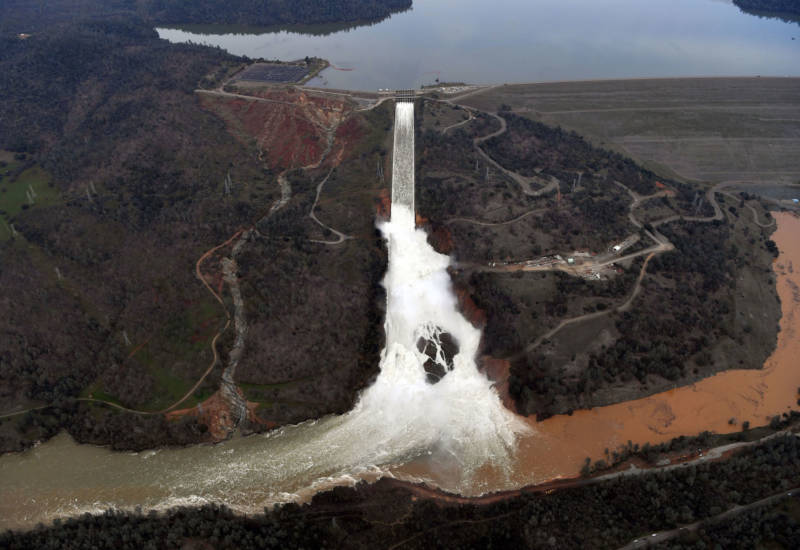Update, 8:55 a.m. Monday: The Department of Water Resources announced Monday that it will begin releasing water down the rebuilt Oroville Dam spillway on Tuesday. The release is designed to help manage the level of Lake Oroville, the reservoir behind the dam, as storms continue to roll across Northern California and this season's large snowpack begins to melt.
Details on the spillway reconstruction and 2017 disaster follow:
Original post, Tuesday, March 26: The agency that manages Oroville Dam says the facility's rebuilt spillway is likely to be pressed into service for the first time as soon as next week.
The Department of Water Resources announced Tuesday that Lake Oroville has risen close to the point where the agency will need to release water to maintain empty reservoir space for runoff from incoming storms and spring snowmelt.
DWR said it will give the public between 24 and 72 hours advance notice of a release, which can be expected to cause relatively rapid rises on the Feather River downstream of the dam.
In the meantime, the department said construction crews are extracting heavy equipment from the spillway area and removing a construction road that had been built at the base of the new concrete chute.


